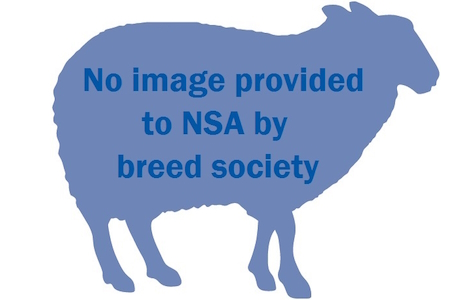Ouessant
Appearance: The Ouessant is the smallest naturally occurring sheep breed in the world, with adult males and females less than half a meter tall at the shoulder. They have a thick fleece that can be black, white or brown. Male Ouessants are horned and females are polled, while both have naturally-occurring short tails.
History: Ouessant sheep are a rare, primitive breed, originally from the island of Ouessant off the west coast of Brittany in France. Until the 19th century they were found only on Ouessant and, as a result, almost disappeared at the start of the 20th century. However, the breed was saved from extinction as a result of small flocks round in chateaux parklands in mainland France, and has since increased in number and geographical spread.
Geography: Now absent from L’ile d’Ouessant, the majority of Ouessant sheep are found in France, Holland, Germany and Belgium. They were first imported into the UK in the 1990s, initially for zoos and farm parks, but are now spread throughout all parts of the UK. They are also gaining popularity in the USA.
Breed attributes: Ouessant is an island exposed to the full force of the Atlantic weather, so Ouessant sheep are hardy and considered to be a low maintenance breed. They are typically friendlier than other primitive breeds and renowned for their character, small stature and high quality wool.
Commercial desirability: Ouessant sheep are marketed as able to produce more grams of wool per gram of sheep than any other breed. They are dual-purpose and produce a 12-14kg carcase at 18 months of age, which the Ouessant Sheep Society describes as extremely flavoursome. Ewes produce one lamb a year.
Visit https://ouessantsheep.org.uk/




























































































































































































































































































